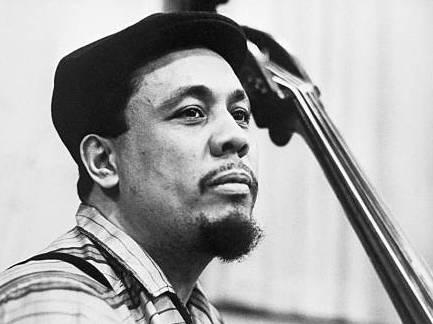Section Branding
Header Content
How the late jazz great Charles Mingus is being remembered 100 years later
Primary Content
Charles Mingus is one of the greatest jazz artists of the 20th century. He would have celebrated his 100th birthday on April 22.
"Charles Mingus is one of our most important thinkers and composers," says Wynton Marsalis, who will lead two concerts in honor of the composer at Lincoln Center. "He touched on many of the foundations of jazz and American music, from the roots to the most sophisticated forms."
A Lonely Childhood
Born to mixed-race parents in Nogales, Ariz., Mingus grew up in Los Angeles. His mother died when he was only four months old. In a 1962 interview, Mingus notes he was light-skinned; he didn't fit in with the Black, white or Mexican kids at school. He played the trombone, then the cello, but switched to bass when he was 16 because, at the time, it was impossible for a Black man to find work playing classical music.
In the interview, he said his father, who was an Army sergeant, never loved him.
"I never had any idea or father image," he said. "Anything that was something wrong he knocked it down, you know? I never felt any love in my family. I had no one to say what am I supposed to be like. He never even told me the world like it was. He never said anything about Black or white. He never told me anything."
Mingus's upbringing shaped his music. He was an outspoken advocate for civil rights, using his music to make political statements. He wrote that his 1956 song, "Pithecanthropus Erectus" was about the first man to stand erect, who pounded his chest, then looked to enslave others.
His 1959 song, "Fables of Faubus," was written as a protest against Arkansas Gov. Orval Faubus, who sent out the National Guard to prevent the integration of Little Rock Central High School by nine Black teenagers.
The Angry Man of Jazz
Mingus drew on traditions that ranged from ragtime to the avant-garde, and his compositions expressed an equally broad range of emotion. In 1962, he told his record producer Nehusi Ertegun that the reason his music was always changing was that he was always changing.
"I can play a sad thing, you recognize it because you're used to that. I can play an angry tune, GRRRRR. I can play happy little ditties like I do with my baby, you know? It's all kinds of emotions to play in music but what I'm trying to play is very difficult because I'm trying to play the truth of what I am."
Mingus had a well-known temper. Nicknamed "The Angry Man of Jazz," on the bandstand, he demanded perfection. He fired sidemen in the middle of a gig. He once punched trombonist Jimmy Knepper in the mouth and ruined his embouchure. Another time he shattered his $2000 bass when he tossed it off the stage in anger.
At one point, Mingus voluntarily checked himself into Bellevue Psychiatric Hospital.
Gene Santoro, author of Myself When I Am Real, the Life and Music of Charles Mingus, said Mingus wasn't crazy; he simply liked to stir things up.
"If a set went really well," he said, "if there wasn't places where he would start breaking in yelling at people and doing things, he came off the bandstand upset. He'd rather have the set break down, or have himself break it down and turn it into a performance with the unexpected."
Wynton Marsalis says Mingus's music --with its shifting forms and varied time signatures-- is difficult to play, but it should be played –because the music and the message are important.
"Mingus had a lofty vision of the future," he said. "He just always wanted our world and our country to live up to the promises of equality that our country was one of the first to actually lay down and mean it for the majority of the people. And we still struggle with it because it's not easy to believe in other people's freedom."
Charles Mingus suffered from Lou Gherig's disease in the 1970s. He died at the age of 56 in 1979. His ashes were scattered in the Ganges River.
In New York this weekend, the Charles Mingus Centennial Celebration will take place at Lincoln Center - which says that it will blend "swinging hard bop, Afro-Latin grooves, and deeply felt blues."
Copyright 2022 NPR. To see more, visit https://www.npr.org.

